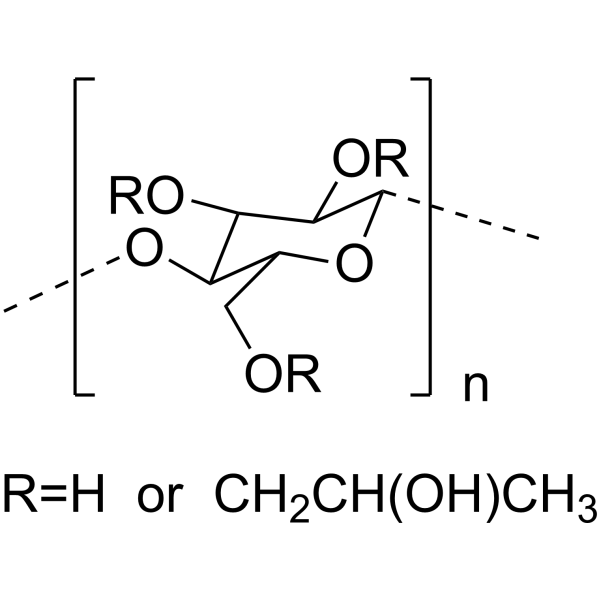9004-64-2
| Name | Hydroxypropyl cellulose |
|---|---|
| Synonyms |
β-D-Glucopyranoside, 2-hydroxypropyl 2,3,6-tris-O-(2-hydroxypropyl)-4-O-[2,3,4,6-tetrakis-O-(2-hydroxypropyl)-α-D-glucopyranosyl]-
Klucel MFCD00132688 2-Hydroxypropyl 2,3,6-tris-O-(2-hydroxypropyl)-4-O-[2,3,4,6-tetrakis-O-(2-hydroxypropyl)-α-D-glucopyranosyl]-β-D-glucopyranoside |
| Description | Hydroxypropyl Cellulose is somewhat amphiphilic in character and is a surfactant. Hydroxypropyl Cellulose can be used as a pharmaceutical excipient, such as coating agent, emulsifier, suspension, tablet, thickener, viscosifier. Pharmaceutical excipients, or pharmaceutical auxiliaries, refer to other chemical substances used in the pharmaceutical process other than pharmaceutical ingredients. Pharmaceutical excipients generally refer to inactive ingredients in pharmaceutical preparations, which can improve the stability, solubility and processability of pharmaceutical preparations. Pharmaceutical excipients also affect the absorption, distribution, metabolism, and elimination (ADME) processes of co-administered drugs[1][2]. |
|---|---|
| Related Catalog | |
| References |
| Density | 1.3±0.1 g/cm3 |
|---|---|
| Boiling Point | 891.2±65.0 °C at 760 mmHg |
| Molecular Formula | C36H70O19 |
| Molecular Weight | 806.930 |
| Flash Point | 492.8±34.3 °C |
| Exact Mass | 806.451111 |
| LogP | -1.24 |
| Appearance | powder | White to light cream |
| Vapour Pressure | 0.0±0.6 mmHg at 25°C |
| Index of Refraction | 1.532 |
| Stability | Stable. Incompatible with strong oxidizing agents. Combustible. |
| Water Solubility | polar oganic solvents: soluble |
| Personal Protective Equipment | Eyeshields;Gloves;type N95 (US);type P1 (EN143) respirator filter |
|---|---|
| Hazard Codes | S24/S25 |
| Safety Phrases | 24/25 |
| RIDADR | NONH for all modes of transport |
| WGK Germany | 1 |
| RTECS | NF9050000 |


